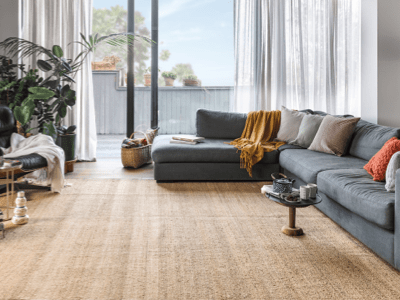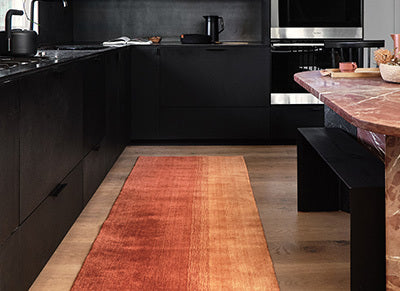














Order A Sample
Dulandina - Rug Sample
Size 12" x 12"
Free shipping
One-of-a-kind Turkish Rugs
Our Turkish rugs are each one-of-a-kind. Many are made between 30 and 100 years ago, and curated by us. Others are fresh off the loom using traditional techniques. Known for their intricate patterns and tight, sturdy weaves, what began as a homemade, everyday comfort ultimately became a robust industry, embodying a profound artistic expression of Turkey's culture.
Recently Viewed
Dulandina Vintage Turkish Rug
Save 20% when you buy 2 or more non-custom rugs!
Overview
+
Free Shipping & Easy Returns
Sustainable
Natural Fiber
Upcycled
Handmade
Vintage
Ready to Ship
Only One Made
One-of-a-kind vintage rug, handknotted in Kars, Turkey
Dulandina has been professionally cleaned; age-related wear and natural inconsistencies are inherent in these unique, handcrafted vintage rugs.
- Only one in stock
- 100% wool
- Dimensions: 6'10" x 9'4" (210 cm x 287 cm)
- Low pile: approximately 0.2"(0.5cm)
- Color palette: bone beige, periwinkle blue, rose quartz
Care
+
- We recommend that you regularly vacuum your rug to remove dirt and grime. Depending on how heavily your rug is used, just once or twice a month is adequate. Too much vacuuming can wear down the knots and fibers more quickly. If you have a suction attachment on your vacuum cleaner, use that instead of a rotary vacuum.
- Every few months, you’ll also want to flip your rug over and vacuum the back to get the grit out of the foundation of the rug. It also helps to rotate your rug once a year to ensure even wear over time.
- Every 3-5 years, we recommend getting your rug professionally hand-washed. Please do not take it to get steam or dry cleaned—this will almost certainly damage the rug! Hand-washing requires the use of a pH-balanced shampoo, worked into the rug by hand with a soft-bristled brush, before being rinsed thoroughly. This process should be repeated a few times.
- In case of spills:
- If the spill is organic and non-oily (e.g., wine), use a paper towel or cloth to blot the liquid. Add some clean water sparingly to the spot to dilute the stain (or wet a paper towel or cloth) and blot. Repeat this process until the stain is removed.
- If the stain is persistent, resist the urge to scrub. Scrubbing can damage the wool fibers and more easily allow the stain to penetrate. You may try using a mild detergent, such as very diluted dishwashing soap, following the same blot-and-rinse procedure.
- If the spill is a denser, more oily liquid, try first to scoop what you can from the surface using a spoon or perhaps some heavier paper, and then do the blot-and-rinse. If the spill is significant, non-organic and/or composed of chemical substances, or the above methods don’t work, we suggest getting the rug professionally hand-washed as soon as possible.
- For rugs with deeply saturated color palettes, be sure to spot-clean them in an area that can be hosed down immediately after, as some color bleeding may occur.
Details
+
- A variation of motifs—simple, tribal, bold, and colorful—all hailing from the Anatolian region (modern-day Turkey)
- A prominent, oversized medallion anchors the motif to a center focal point from which the design blooms out and is balanced by complementary design elements
- Artisanal and tribal, geometric designs feature angular edges and simple shapes—like diamonds, squares, lattices, and stylized animals
Kars, found in the easternmost part of Turkey (near the Caucasus border), is known for its rugs woven with modified Caucasian designs. Almost always constructed with an all-wool foundation, these rugs are coarsely woven in either earth-toned natural wool colors (like cream, gray, and brown) or pastel pinks and blues.
Material DetailsWool is the most widely used fiber in Turkish rug design. Not only is it plentiful in supply, it’s durable, long-lasting, and incredibly soft—so it’s super comfy to walk and relax on.
Reviews
+
Returns & Exchanges
+






